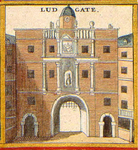Worshipful Society of Apothecaries
1617 establishments in EnglandLivery companiesMedical associations based in the United KingdomMedical museums in LondonOrganisations based in London with royal patronage ... and 5 more
Pharmaceutical industry in the United KingdomPharmacy-related professional associationsPharmacy organisations in the United KingdomProfessional associations based in the United KingdomUse British English from November 2014

The Worshipful Society of Apothecaries of London is one of the livery companies of the City of London. It is one of the largest livery companies (with over 1,600 members in 2012) and ranks 58th in their order of precedence. The society is a member of the London Museums of Health & Medicine and its guild church is the Church of St Andrew-by-the-Wardrobe. The Society's modern roles include educational, charitable and social activities, in addition to supporting the City of London, its governance and the Lord Mayor of the City of London.
Excerpt from the Wikipedia article Worshipful Society of Apothecaries (License: CC BY-SA 3.0, Authors, Images).Worshipful Society of Apothecaries
Black Friars Lane, City of London
Geographical coordinates (GPS) Address Phone number Website External links Nearby Places Show on map
Geographical coordinates (GPS)
| Latitude | Longitude |
|---|---|
| N 51.5128 ° | E -0.1032 ° |
Address
Worshipful Society of Apothecaries of London
Black Friars Lane
EC4V 6EJ City of London
England, United Kingdom
Open on Google Maps










